Scientists and entrepreneurs are sowing the seeds for a new kind of industry. Hayley Bennett explores the buzz around the marine ‘biorefinery’ business – and what might hold it back
Biochemist Charlie Bavington is on the hunt for somewhere to put a lot of seaweed. His company, Oceanium, plans to take 2000 tonnes of farmed kelp per year and turn it into nutraceuticals, ingredients for food and cosmetics, and more besides. But Bavington, who co-founded the company in 2018 and is now chief technical officer, says this new facility will only be the demonstration plant. Eventually, he hopes to roll out plants with 10 times the capacity. ‘We can then put one of those wherever in the world there is enough kelp to feed a factory, and it will essentially produce the same suite of products,’ he says.
Oceanium’s approach goes some way towards realising the concept of a ‘seaweed biorefinery’ – a term used in Europe’s emerging seaweed industry to describe the transformation of seaweeds into a cascade of different products and chemicals. It is essentially macroalgae’s answer to an oil refinery. Products range from expensive supplement powders and biodegradable packaging to environmentally friendly animal feeds. The idea has captured the imaginations of scientists and entrepreneurs alike – as well as funding bodies – for the potential benefits that farmed seaweed could offer the environment and coastal communities. But can companies like Oceanium make the most of what seaweed has to offer and do it sustainably, at scale?
Oceanium is based in Oban on the west coast Scotland, within easy reach of seaweed farms – where seaweed is seeded onto ropes stretched out in the water, like rows of crops in a field. But the company works mostly with larger producers, including one in the Faroe Islands that seeded 27km of line this year. Each kilometre produces roughly 10 tonnes. According to Bavington, Oceanium works mainly with sugar kelp, an unassuming brown seaweed with crinkly fronds. ‘That’s what’s available – it’s the bulk of the cultivation,’ he says.
Oceanium doesn’t buy wild harvested kelp, because it’s ‘environmentally damaging at large scale’, but that’s currently how most seaweed outside of Asia is produced. However, at the last count, 13 European countries including Norway, France, Spain and Portugal had commercial seaweed farms. One of sugar kelp’s main attractions is its wide distribution – it’s found in British waters as well as across the Arctic, Atlantic and Pacific oceans. All brown seaweeds, though, and the red and green ones, are jam-packed with polysaccharides. These long chains of sugar molecules are key targets for biorefiners who want to extract and purify them or transform them into other useful chemicals.
Algal boom
Seaweeds’ sugary gifts are no secret, of course. Sugar kelp got its name from the powdery white substance – mannitol, a sugar alcohol and sweetener – that crystallises on its fronds when it dries. And, for decades, the food industry has used seaweed alginates, agars and carrageenans (all polysaccharide-based) as hydrocolloids for thickening, stabilising and gelling agents. But the current hype around seaweeds centres on their untapped potential, which extends from sugars to proteins and pigments.
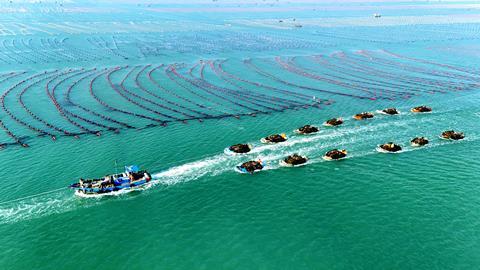
The World Bank predicts that by 2030 the market for seaweed-derived nutraceuticals alone will be worth $3.9 billion (£3 billion). The macroalgal boom should see seaweed aquaculture proliferating in Europe and beyond. Australia, for example, is right now ploughing considerable efforts into harnessing halogenated compounds in a red seaweed called Asparagopsis to make cattle feed additives that reduce levels of methane (a potent greenhouse gas) in cows’ burps. In May, Mars announced it was partnering with a Tasmanian seaweed company and New Zealand dairy producers to test whether Asparagopsis supplements can reduce the impact of its chocolate on the climate.
In an ideal world, seaweed farmers’ produce wouldn’t simply be sold to cattle feed producers. Under the biorefinery concept, it would be bought by a refiner like Oceanium and used to make several different products. Although according to Mike Allen, a marine biotechnologist at the University of Exeter, UK, no one is doing this at scale right now, because the industry is still too fragmentary. ‘There’s no big pipeline that you can put all the seaweed biomass into so that it comes out as different products,’ he says, noting that supply issues are also preventing scale-up. ‘So at the moment, we’re stuck at small-scale, artisan, cottage industry biorefinery.’
However, it’s not just about what producers can make using seaweed. Schemes could soon exist to award credits for ‘blue carbon’ storage in farmed seaweeds or so that payments can be made for using them to clean up marine waters – seaweeds can soak up polluting nutrients like nitrates and phosphates found in agricultural run-off. The seaweed industry could tap into this combination of upstream service value and downstream product value, Allen says. ‘So when you talk about a refinery, it might be that it’s a product refinery and a service refinery.’
Oceanium puts a lot of emphasis on the service values, although it doesn’t monetise them. Alongside water purification, its promotional materials cite environmental benefits such as habitats for marine species, an ability to take up carbon dioxide and the fact that you don’t have to fell a forest to start a seaweed farm. Bavington, though is careful not to overpromise on carbon storage, noting that ‘the products we make are consumed or biodegraded, so it’s circular’.
Bio-massive potential
Within Europe, there are now whole networks of scientists plugged into the potential of seaweeds through EU funding programmes. One is chemist Anne Meyer at the Technical University of Denmark (DTU) near Copenhagen, whose fascination with macroalgae grew from an interest in alternative forms of biomass for making biofuels. As she explains, her work focuses on using enzymes for the ‘upgrading, conversion, degradation or transformation’ of natural substances – and she’d already sifted through many plant-based options, which were stiff and difficult to break up because of their high lignin content.
Seaweed, which is floppy and virtually devoid of lignin, seemed the perfect alternative. Since joining an EU-funded seaweed project, however, Meyer’s research has broadened out to encompass a wider array of possible products accessible through biorefining. ‘It’s a super exciting field, because it has all you want,’ she says. ‘It has the sustainability and it has the growth potential.’ Both DTU and Oceanium are partners in the EU-funded consortium Seamark, which aims to scale up seaweed cultivation and processing across 12 innovative products, from pig feed to pharmaceuticals.
The suite of potential products for a successful seaweed biorefinery tends to be envisioned as a pyramid of low-, medium- and high-value products, with the low-value bulk (including biofuels) at the bottom, medium-value products including food and cosmetics ingredients in the middle, and small volumes of high-value products like drugs at the top. Hydrocolloids fit somewhere in the middle, though Oceanium is avoiding competing with this well-established market, as well as biofuels, which Bavington says ‘aren’t economically viable from seaweeds’. Seamark’s plans don’t include biofuels either.
Hydrothermal liquefaction is like geology in a tin
As Allen explains, making cheap fuels out of seaweed requires a process that is similar in scale to the cracking of crude oil in the petrochemical industry. ‘You need an oil refinery – that sort of infrastructure, because you can’t do that on a small scale,’ he says. ‘There’s a reason why oil refineries are big and it’s because they need economies of scale.’
Technically, though, turning the hydrocarbon skeletons in seaweed into oil isn’t that tricky and if economics weren’t an issue, this ‘bio-oil’ could, theoretically, replace crude oil as a source for both liquid fuels and other chemicals. Earlier this year, Allen published a paper on a hydrothermal liquefaction (HTL) process that he used to make oil out of beached brown Sargassum seaweeds, which are the same genus as sugar kelp.
Giant blooms of these seaweeds – fed by nutrient run-off from farming – clog up an entire 8000km stretch of the Atlantic Ocean from West Africa to the Gulf of Mexico, smothering marine life and kicking up a stink on Caribbean beaches, where they rot and emit hydrogen sulfide. Allen and Matthew Pearce, from PureFire Labs in Cambridge, shipped some of this nuisance seaweed back to the UK and subjected it to HTL, which Allen likens to ‘geology in a tin’: high-pressure, high-temperature processes resembling those that create oil deposits on geological timescales, but condensed into a few hours or days in a reactor. HTL can be done wet, an advantage in cooler countries like the UK, where sun-drying is often out of the question. But the process still consumes far too much energy, Allen says, for it to be economical – unless, perhaps, the source seaweeds are seen to have some additional service value.
Sweet store
While Oceanium isn’t dipping its toe into biofuels, it already produces and sells high-value ‘bioactives’ (for foods and cosmetics), including a beta-glucan and sulfated seaweed polysaccharides called fucoidans – widely studied for their anti-inflammatory, antioxidant, anti-viral and anti-cancer activities. The middle of Oceanium’s biorefinery pyramid is currently occupied by medium-value fibres sold as food ingredients and biodegradable printing inks. But the company’s portfolio looks set to grow, as it is also exploring low-value packaging and other materials applications for these fibres, as well as how it can use sugar kelp’s minerals, proteins, and the sweet, powdery mannitol that inspired its name. While mannitol can be sold as a food sweetener, it could also act as a platform chemical for accessing other structures.
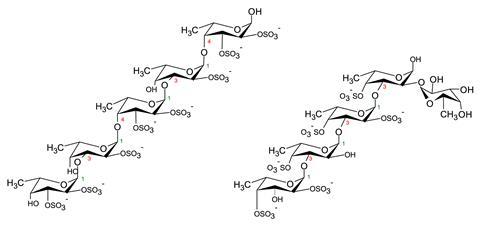
Bavington refers to Oceanium’s processing as ‘fairly simple cascade biorefinery’, involving mild, water-based extraction, separating the soluble and insoluble components, and then fractionating the soluble ones to make the desired products. The chemistry, he says, is already pretty green, but the whole process could be greener if more of what’s currently wasted was used. ‘The stuff that’s in our waste stream at the moment is not particularly environmentally harmful, but we need to valorise that,’ he says. ‘We are an impact business, and it just helps the overall impact and economics of the process if we can turn those into products as well.’
One way to make the most out of the seaweed that is fed into biorefinery processes, and keep the chemistry green, is to drive these processes using seaweed-specific enzymes. These enzymes, Meyer says, tend to operate under gentler conditions than conventional refining processes and can act like ‘molecular tweezers’ for teasing out chemical treasures. In this way, high temperatures, acids and toxic solvents can be avoided, and the milder processing means materials that could become valuable further downstream are saved from ruin. But where do such enzymes come from?
Sometimes enzymes for targeting seaweed polysaccharides come from plants, but tracking down those that are especially well-suited to seaweeds can require more legwork. ‘That is because seaweeds have not been explored so well,’ says Meyer. ‘And the way they are built is different to plants, so we have to look for new enzymes.’ One fertile hunting ground is in the bugs that live and feed on seaweeds. For example, by sequencing DNA and protein from a marine fungus found on decaying seaweeds, Meyer’s team tracked down new enzymes for degrading alginates.
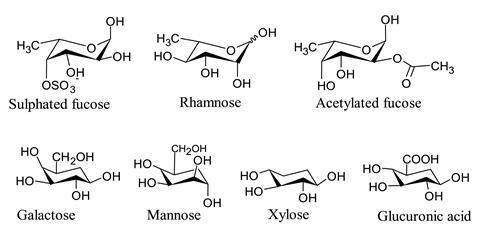
Enzymes that target alginates can also help to release fucoidans, like those Oceanium is producing as bioactives. This might sound counterintuitive given that enzymes are supposed to be specific, but it seems to work because fucoidans are thought to be intertwined with alginates (and cellulose) in seaweed’s sugar-stacked cell walls. When Meyer’s team tested a mixture of alginate- and cellulose-digesting enzymes with sugar kelp, they got fucoidan yields comparable to those from harsher, chemical extractions, and bigger, better-preserved fucoidans. Meanwhile, they have recently unveiled the structure of an enzyme from a marine bacterium that targets fucoidans directly. Such fucoidanase enzymes were relatively unknown until recently.
Enzyme-based approaches are already in development at Oceanium, with Bavington noting the number of ‘interesting modifying enzymes’ for fucoidans. Enzymes could also be used to tinker with beta-glucans to produce a diverse array of structures, including some shorter chain oligosaccharides that might even find pharma applications.
Refine to restore?
Thus far, refiners may have only scratched the surface of what it is possible to make with seaweeds. However, their exploitation does need careful stewardship. Major shifts in how seaweed species are distributed across the globe are underway due to climate change, meaning that while some regions, like the Caribbean, may appear to be under siege, others, like Australia, are seeing their seaweeds disappear. The loss of so-called kelp ‘forests’ has consequences for fish and other species that dwell in them, and marine carbon stores.
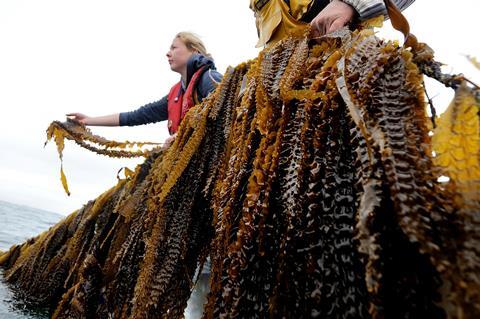
Georgina Wood, an Australian seaweed scientist who has spent the last eight years working on restoration projects, is now at Flinders University in Adelaide, where the government funds her research on kelp aquaculture. Much of her restoration work was based on appropriating Norwegian techniques developed for farming sugar kelp to try to restore Australia’s dwindling underwater forests. But she thinks aquaculture is now necessary to upscale restoration. ‘As it is, there’s no way to restore at the scale that we’re currently losing marine forests at without aquaculture,’ she says. ‘So we need that industry to draw on.’ She’s also optimistic that because Australia’s seaweed industry is so young, there are still opportunities to support the development of guidelines that ensure sustainable growth, with fewer negative impacts for the environment.
In the UK, meanwhile, the small scale of farmed production remains one of the major barriers to growth of the seaweed industry. Seaweed production globally may have tripled in the last two decades, but UK farmers face a difficult regulatory landscape, as well as conflict with fishers and residents in some coastal regions where farms are proposed.
Allen’s solution is to expand into offshore areas, using dynamic, drifting cultivation systems equipped with automated monitoring. These are techniques he’s developing with software and robotics engineers as co-founder of Seaweed Generation, a company focused on decarbonisation – for now, but with big plans for the future. ‘It’s about developing the robotic infrastructure to cultivate seaweeds so effectively and efficiently – and cheaply – that all of these products we’ve discussed can be nailed,’ he says. ‘You can [then] put these products in pipelines that are currently using fossil fuels. But to get there you have to learn to do all these other things and that vision is so far away.’
Allen’s hi-tech systems would modernise an industry that he says relies too heavily on techniques drawn from traditional crop farming. Bavington, though, is more optimistic, suggesting that advances in seaweed farming technology and breeding techniques are set to deliver ‘a massive uplift in yield and reduction in price’ in the next couple of decades – but only as demand dictates. Currently, he says, farmers are waiting for the demand that companies like Oceanium can create. ‘It’s at a point in time for the industry now where, as long as we and other biorefiners are successful, and we make those products that the market wants and get that market traction, then the whole thing will grow quite quickly.’
As for his demo plant, location spotting has been difficult, but his zero-waste ambitions mean he’s not looking to start from scratch. ‘If anyone knows of an empty factory we can repurpose, we’d love not to build a new one,’ he laughs.
Hayley Bennett is a science writer based in Bristol, UK







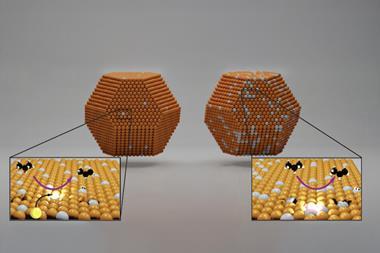



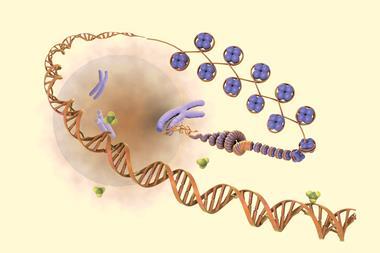
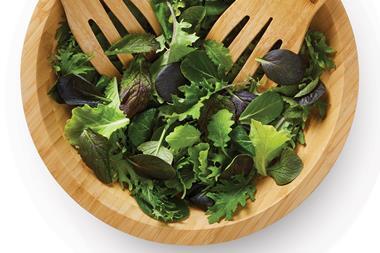

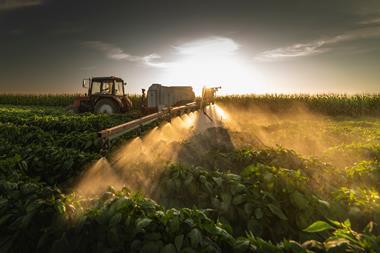

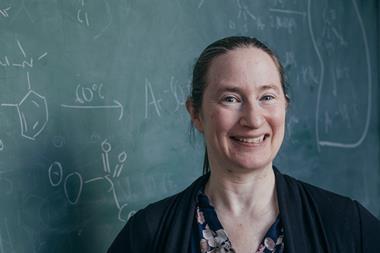

No comments yet